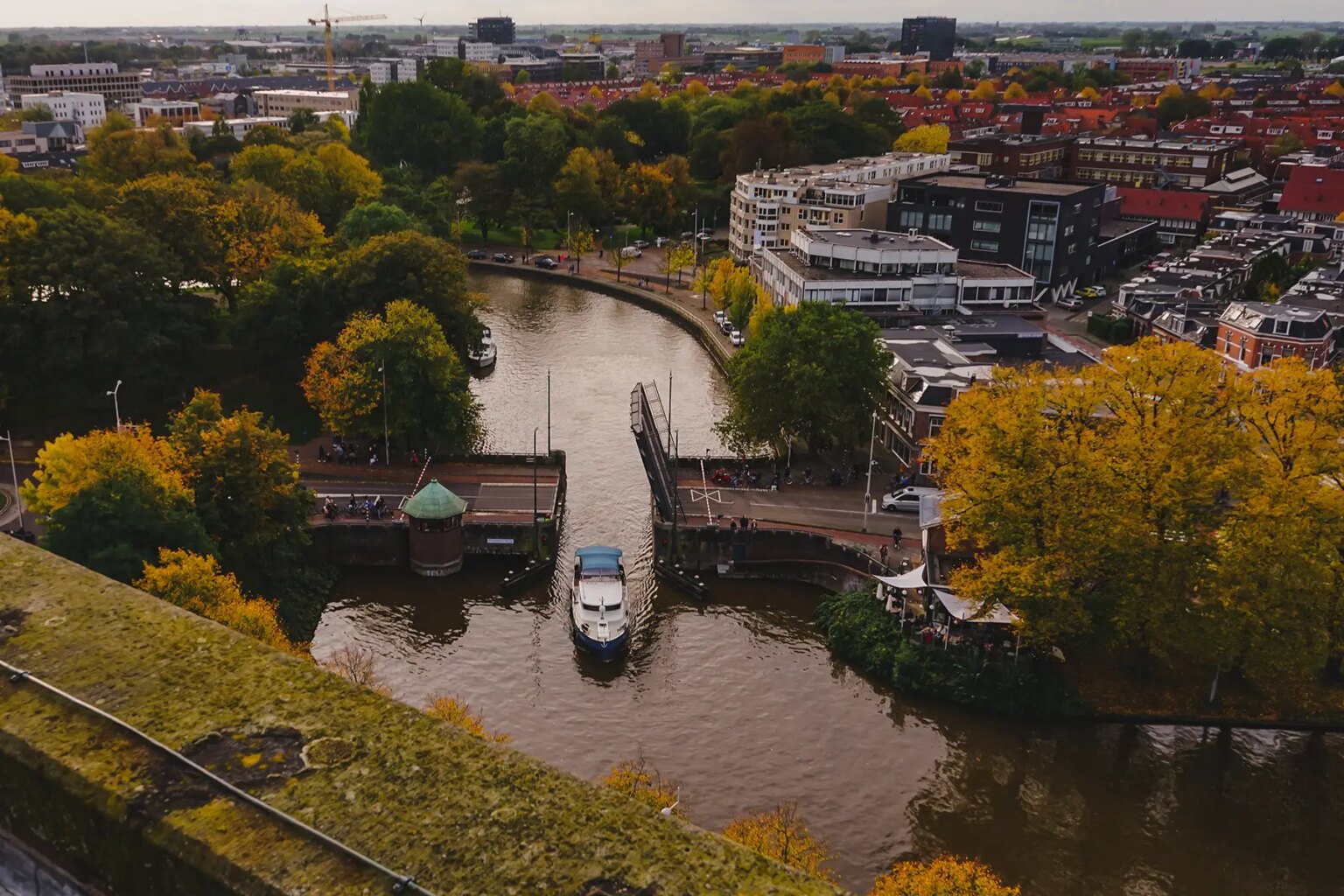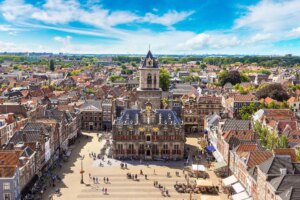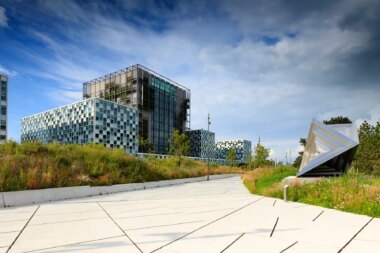Leeuwarden was founded along the shores of the Middelzee in the second century AD and is around 2 hrs 20 minutes from Amsterdam by train, or 1.5 hours by car. Originally a farming center, Leeuwarden enjoyed good trade relations until the 15th century when the waterway silted up, effectively stopping all trade by boat. In 1435, Leeuwarden was granted town rights, becoming the capital city of the region in 1504. At this time the central government and jurisdiction settled here and the city became the residence of the Frisian stadtholders.
HousingAnywhere
Simplify finding a home abroad with HousingAnywhere. Their easy-to-use platform lets landlords and tenants connect, offering a popular service for anyone moving internationally. So, find your new home when relocating abroad quickly and easily with HousingAnywhere.
Modern Leeuwarden
Today Leeuwarden is the administrative, economic, educational, and cultural heart of Friesland (625,000 inhabitants), which has its own language: Stadsfries or Stadfries – a mixture of Hollandic dialect vocabulary and West Frisian grammar.
The city is the center of local government; home to financial services (including Friesland Bank) and insurance companies (Achmea and Aegon); and has a growing creative industry based on serious gaming. Other important industries in the area include metal processing, water technology, and agricultural-nutritional business (Koninklijke Friesland Foods NV).
Leeuwarden accommodates a number of highly respected universities of applied science (HBO) including the Noordelijke Hogeschool Leeuwarden, Van Hall Institute, and Stenden University. There are also campuses for Wageningen University, Rijksuniversiteit Groningen, and Universiteit Twente. With the inclusion of the two MBO schools, Friese Poort and Friesland College, Leeuwarden has a student population of over 30,000.
The famous Dutch 200km speed skating race (extremely cold weather permitting) Elfstedentocht starts and begins in Leeuwarden which is also the host city for the annual international domino festival.
Local celebrities
Throughout the centuries Leeuwarden has been a source of intriguing characters in literature, science and politics.
Erotic dancer Mata Hari, who was controversially executed by the French in 1917 for allegedly spying for the Germans during the First World War, was a native of the city. Born Margaretha Zelle in Leeuwarden on 7 August 1876, the city has taken her to its heart and still campaigns for her exoneration, claiming she was wrongly convicted.
Other notable locals include Maurits Cornelis Escher (1898-1972) one of the world’s most famous graphic artists and Titia Bergsma, the first Western woman to visit Japan when it closed itself to the outside world. Ironically, she is more famous in Japan than in the Netherlands.
Housing
With property prices considerably less than the Dutch national average, Leeuwarden is an ideal place for young families and first-time home-buyers. Friesland does not have such large expat communities as seen in the Randstad, so moving to the area may initially seem isolating. What makes the area enticing is more space at an affordable price in a child-friendly environment (with more than 40 primary schools) as well as the beautiful surrounding countryside.
Where to live in Leeuwarden
City center
As with many Dutch cities, Leeuwarden Centre has the charm of old homes set on old streets and canals. The center has transformed over the past 25 years, giving the city a cleaner, and more spacious feel. There are three cinemas, a beautiful library with a good selection of English books, and a plethora of bars, cafés, and restaurants (although many focus on the student market). Naturally, living in the Centrum also increases your chances of English conversations while you are still learning the Dutch language.
North
The northern suburbs offer easy proximity to most water-sport activities, especially sailing and rowing. Suburbs that are within two kilometers from the center of Leeuwarden include the Liberty District (popular with students); Oldegalileën (homes from the 1930s, and residential mix of young and old); Rengerspark (includes a beautiful park, university campus, and stately homes); Bloemenbuurt (diverse, colorful neighborhood with lovely 1930s houses); Transvaal (upmarket and desired area); and Boniface (expensive houses including large villas with gardens. Popular with families).
East
According to estimates of property values (WOZ) in the east of Leeuwarden, there is a variation of almost 100 percent between the Indian neighborhood (close to the Cambuur football Stadium, with a range of housing dating from the 1930s–1960s) and the suburb of Camminghaburen (spacious homes on large lots built in the 1980s and 1990s). Also upscale and close to the city center is Orange District (Dutch mansions built around 100 years ago) and Tulpenburg (accommodation more suited to singles and couples, including some converted warehouses). Established, and less expensive areas with a full array of interesting services are Welgelegen and Zeeheldenbuurt.
West
Many families choose to live in the western regions of Leeuwarden, especially in the more affluent areas of Helicon, Westeinde and Vosse Park. These areas offer spacious homes in green neighborhoods. Similarly, Vogelwijk is a green residential area with homes dating back to the 1930s (for both the young and old). Singles prefer Sonnenborgh and students tend to find cheaper accommodation in the Valerius Quarter.
South
The suburbs of Wielenpolle (long-stay Dutch residents), Julianepark (large 1930s-style houses popular with families) and Huizum (well-maintained houses and gardens close to the city center) are favorites among first-home buyers looking to settle down. If you are looking for a condominium with views, maybe head to the historical area of Nijlan (favored by older residents). Further from the city center are the districts of Zuiderburen which offer large, newer homes (waterside, so perfect if you need to park your boat nearby), and Techum (houses on large blocks – on what was previously an area of small farms).
Finding housing in Leeuwarden
When looking for a place to live in Leeuwarden, you could start with classic Dutch housing platforms such as Funda and Pararius. In addition, there are plenty of sites offering accommodation suitable for internationals, including short-term rentals, serviced apartments, and more. Check out the following to explore your options:
Useful resources
- Population: 94,838 www.cbs.nl
- Non-Dutch residents: 16,503
- Leeuwarden info: www.livingleeuwarden.nl
- Friesland province info: www.fryslan.frl







